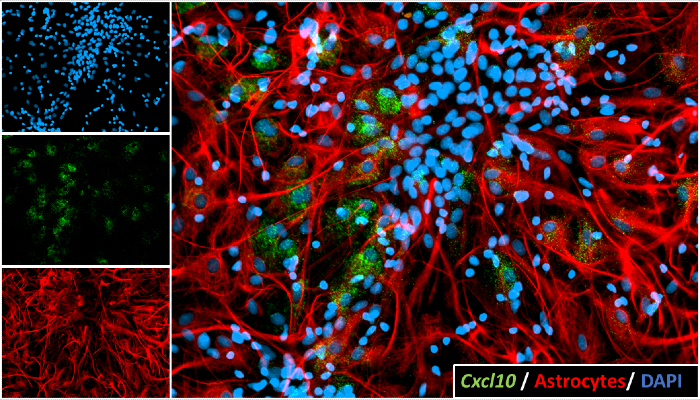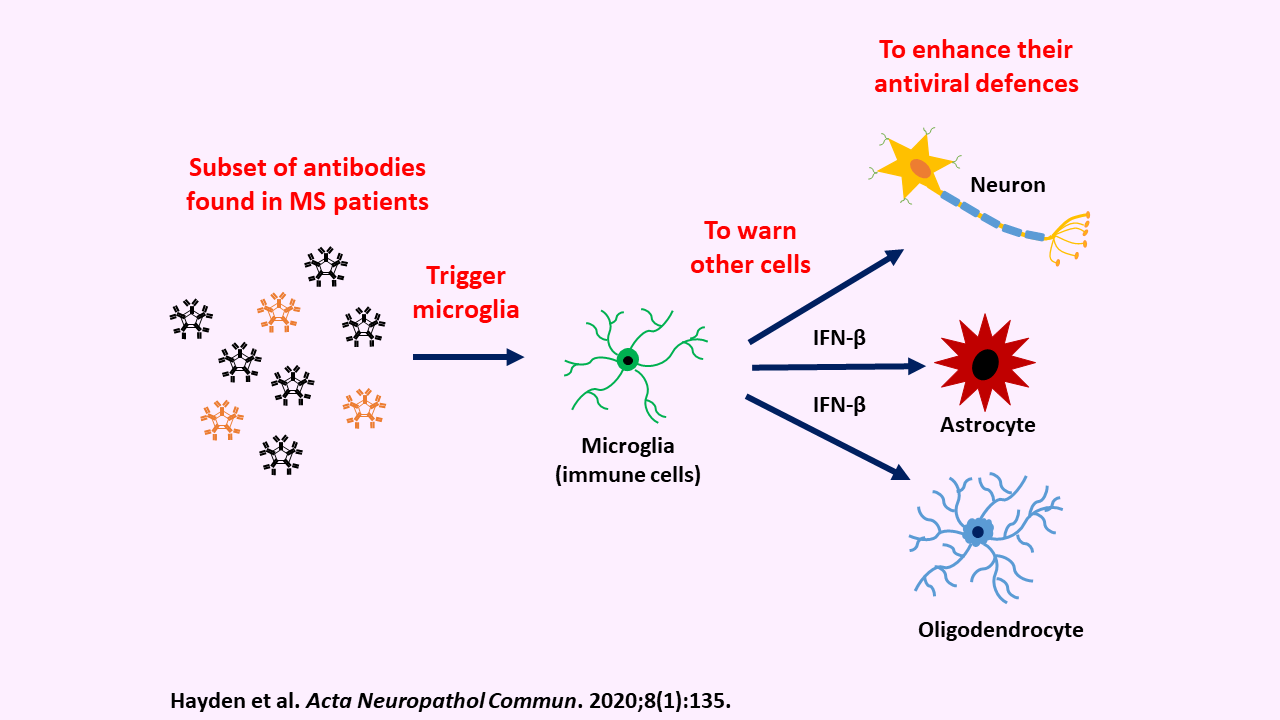MS patients may hold key to protecting brain against viruses
Published: 16 November 2020
Institute scientists have identified a type of antibody found in multiple sclerosis patients that protects the brain from viruses and their research could aid risk stratification for the therapies that are associated with progressive multifocal leukoencephalopathy. Exploring this novel antiviral mechanism further could also provide a new treatment strategy for viral brain infections.

Institute scientists have identified a type of antibody found in multiple sclerosis (MS) patients that protects the brain from viruses and their research could aid risk stratification for the therapies that are associated with Progressive Multifocal Leukoencephalopathy (PML).
Final-year PhD student Lorna Hayden and Research Associate Dr Marieke Pingen have published their lay article, entitled 'Multiple sclerosis: some patients may already hold the key to protecting the brain against viruses' in The Conversation UK.
This article describes the findings of their recent publication: 'Lipid-specific IgMs induce antiviral responses in the CNS: implications for progressive multifocal leukoencephalopathy in multiple sclerosis', a paper that involved collaboration between the Neuroimmunology Research Group, Chemokine Research Group and Centre of Virus Research at the University of Glasgow, the University of Leeds, and Mayo Clinic, Rochester.
From investigation into the immunopathogenesis of multiple sclerosis, researchers identified a novel antiviral mechanism involving lipid-specific IgM antibodies.
MS is a chronic inflammatory disease affecting the brain, a major component of which is excessive antibody synthesis in the cerebrospinal fluid.
Much research has gone into investigating the functions of these antibodies. In doing so, it was discovered that patients who were positive for lipid-specific IgM antibodies had a reduced risk of developing potentially fatal disease PML.
PML is a side effect of many therapies approved for the treatment of MS caused by opportunistic infection of the brain by John Cunningham virus, which is usually harmless, with 40 to 80 per cent of people seropositive.

The investigators of this project hypothesised that these lipid-specific IgM antibodies may have some antiviral properties.
Using a mouse 'brain-in-a-dish' culture system, containing all the major cell types of the central nervous system, they tested lipid-specific IgMs that shared specificity with antibodies found in MS patients. Antibodies were added to the cultures which were then subsequently infected with different types of viruses.
The antibodies did indeed protect the cultures from viral infection, limiting the replication of several different viruses dramatically.
By investigating how the immune system was affected by these antibodies, they determined that they were triggering a branch of the immune response involved in antiviral immunity called the 'type-I interferon response”.
Components of this response were observed in all the major cell types of the central nervous system when antibody was administered. This is important as many different viruses can infect the brain, and they can infect many different cell types.
In summary, Viral Encephalitis is a dangerous disease with high mortality rates and substantial risk of permanent brain damage. Current antivirals are effective against herpes viruses only, leading to less than 50 per cent of patients without effective therapies.
This highlights an urgent need for new antivirals - ones that are effective against a broad range of viruses.
Lorna Hayden said: “It is always amazing how we can learn something by studying one type of disease and can then apply that knowledge to help treat another completely different condition.
"Here, we have teamed up with neuroscientists, immunologists, virologists, biochemists and clinicians to make this link between multiple sclerosis and viral encephalitis."
Image (above, top): Astrocytes expressing Cxcl10 (an antiviral interferon stimulated gene and chemokine)
First published: 16 November 2020

